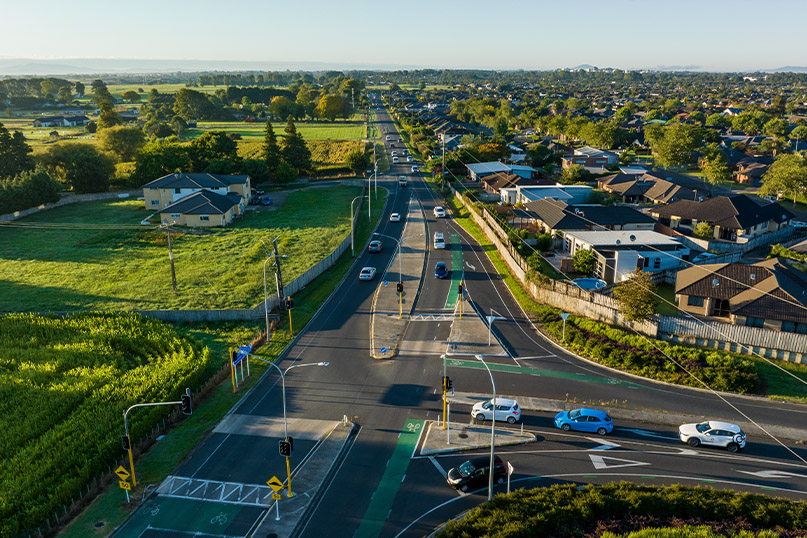
Hamilton City Councillor’s voted to move forward 75 new projects to make the city’s roads safer and easier for anyone and everyone getting from A to B.
The decision was made at the Infrastructure and Transport Committee meeting today (7 March), after healthy debate which centred around keeping everyone safe, especially our tamariki.
“It’s a massive undertaking that will require meticulous planning from several Council teams and contractors, and some patience and understanding from our community”, said Deputy Mayor, and Chair of the Infrastructure and Transport Committee, Angela O’Leary.
“We know these types of works can be disruptive and take some time to get use to, but they’re an important step in keeping everyone using our transport network safe.”
These projects fall under Council’s Low-Cost Low-Risk programme which is 49% funded by Council’s Long-Term Plan 21-31 and 51% funded by Waka Kotahi NZ Transport Agency’s National Land Transport Plan 21-31.
The approved projects range from major intersection upgrades (including raised safety platforms) and making roads safer outside of schools, to making biking and walking improvements, and public transport infrastructure upgrades throughout Hamilton.
“Paired with our commitment to road safety and reducing harm on our roads, each of these projects support Council’s Access Hamilton vision, by providing genuine travel choices connecting people and places in safe, accessible, and smart ways,” O'Leary said.
Raised safety platforms will play a part in most of these projects, especially when it comes to slowing down vehicles and creating safer places for people to cross the road at busy intersections.
International research shows raised safety platforms reduce death and serious injuries by about 40%.
City Transport Unit Director, Gordon Naidoo said Council has started using raised safety platforms in areas with lots of people walking and biking, particularly near schools and key destinations.
“What the data tells us is a person hit by a car at 50km/h has an 80% chance of being killed. If that car is going 30km/h, their chance of death drops to 10%,” he said.
The funding for this programme will be approved through the Annual Plan process, any changes to the amount of funding require the project list to be adjusted to suit.
Wairere Drive and Gordonton Road roundabout
Councillors also spent some time discussing the timeframes for proposed raised safety platforms at the Wairere Drive and Gordonton Road roundabout in response to traffic impacts caused by the Waikato Expressway Hamilton section.
The intersection has seen a 6% increase in traffic volumes, from almost 32,000 to 34,000 vehicles each day since the Hamilton section opened in 2022, providing a new connection into Hamilton from the expressway.
“In the past five years, there have been 71 reported crashes, 25 of these have resulted in cars losing control and hitting the guard rail,” said Naidoo.
This type of crash is typically caused by driving too fast, incorrect lane use, or not giving way.
Councillors will consider the proposed improvements for this site at the next Infrastructure and Transport Committee meeting to decide on the timeframes for these proposed works, following a briefing where they will go through the options in more detail.
“Separate works to upgrade the guardrail are kicking off next week, which will see the roundabout reduced to one lane for about five weeks.”
Small roadside gardens
Today’s Committee meeting also addressed the increasing issue of roadside weeds sprouting throughout Hamilton, and the dangers they create for our staff on the streets maintaining them.
A string of unprecedented bad weather mixed with warm days, staffing challenges due to COVID-19, traffic management restrictions and moratoriums (time blocks where we can’t do this work in specific areas) have made it hard for Council to keep up with the rapid weed growth. Extra resource has been brought in to help the maintenance team catch up.
The current schedule is to mow lawns at parks and reserves once every two weeks, mow roadside grass once every three weeks and maintain the road corridor gardens once every eight weeks, weather dependant.
Council staff will explore non-plant alternatives for the smaller road-side gardens to reduce ongoing maintenance cost.
